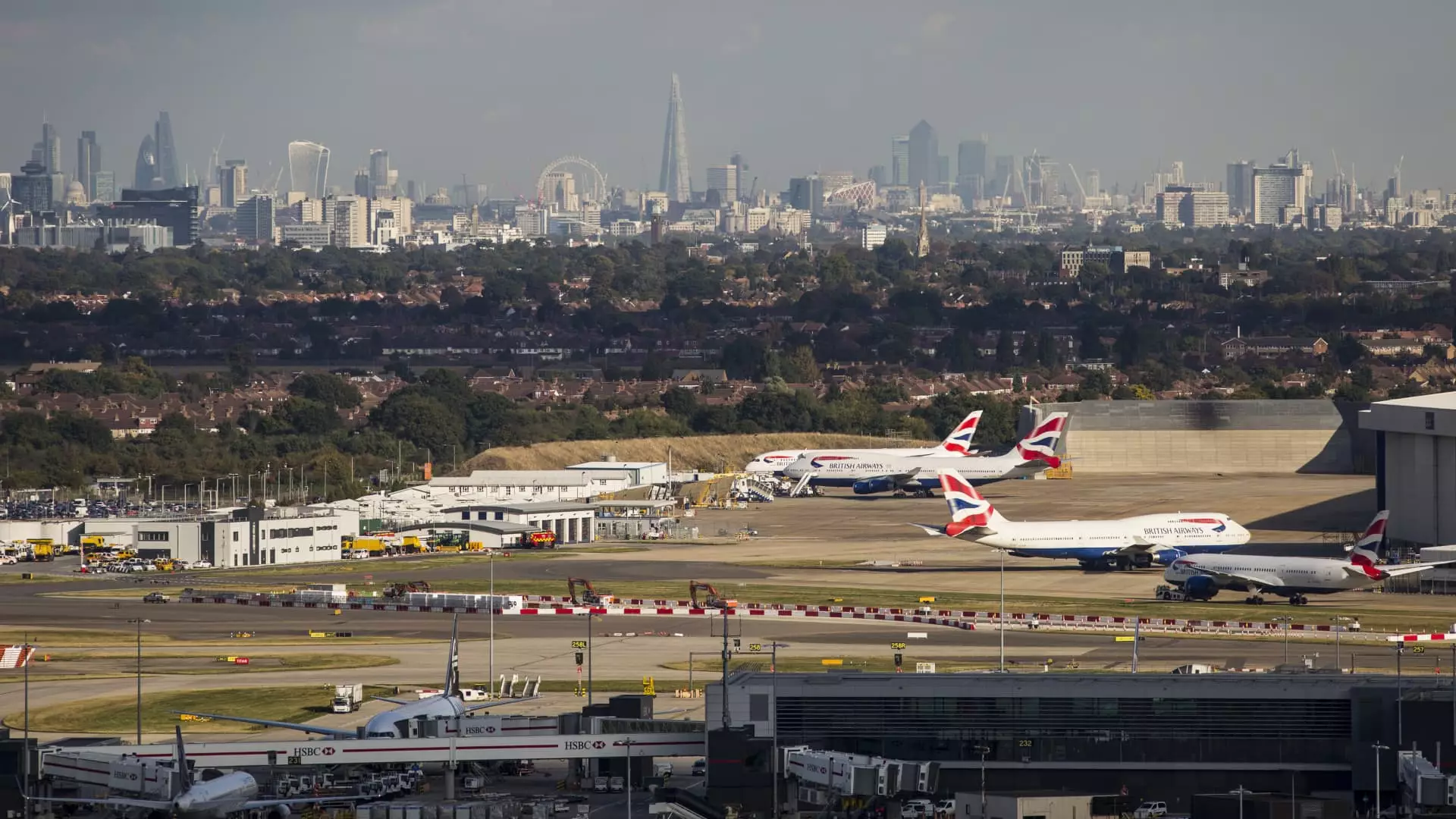As one of the busiest airports in Europe, Heathrow has been at the center of ongoing debates regarding its capacity and infrastructure. Thomas Woldbye, the chief executive of Heathrow, has voiced an urgent call for the U.K. government to make a conclusive decision about the construction of a third runway by the end of 2025. This timeline is not arbitrary; it reflects the pressing need for additional airport capacity amid a rising number of passengers. With Heathrow hitting 79 million travelers in 2023—a substantial jump from 62 million in the previous year—it is clear that the existing facilities are being stretched to their limits. Woldbye’s remark that “Heathrow is running out of capacity” encapsulates a broader issue faced by an airport striving to balance demand with sustainable growth.
However, while Woldbye articulates a sense of urgency, it is crucial to acknowledge that the operational expansion of Heathrow is fraught with complexities. The notion of enhancing capacity is only part of a multifaceted discourse involving economic growth, environmental sustainability, and community impact. Therefore, an essential question emerges: Can the U.K. government find a balanced approach that satisfies both economic aspirations and environmental commitments?
The road to establishing a third runway at Heathrow has been lined with controversy, public consultations, and legal ramifications. Environmental organizations like Friends of the Earth are staunchly opposed to any expansion plans, citing concerns about increased greenhouse gas emissions and the potential detrimental effects on local wildlife. This opposition underscores an ongoing struggle between economic priorities and ecological responsibilities, a tension that has plagued the aviation industry for decades.
Critics of the runway expansion often raise additional points related to noise pollution and traffic disruptions in residential areas surrounding the airport. They argue that the planned construction would not only affect the immediate environment but would also lead to major disruptions along key transportation routes, such as the M25 motorway. For many locals, the prospect of increased air traffic represents a significant threat to their quality of life, complicating the perceived benefits of economic growth touted by supporters of the runway project.
Furthermore, the legal landscape surrounding the potential runway construction has shifted dramatically. The U.K. Supreme Court’s decision in 2020 to overturn an earlier ruling highlights the complexities inherent in aligning infrastructure projects with the country’s commitments under international agreements like the Paris accord. Woldbye’s statement about needing government backing resonates deeply within this context—the construction of a third runway requires not just feasibility studies but also strategic alignment with national environmental goals.
Woldbye’s recognition that the third runway would need governmental approval, along with public funding, poses intriguing financial questions. If governmental support is lacking, it falls upon Heathrow to outline a financially viable proposal to its shareholders—one that may or may not find favor in a more environmentally concise investment climate. The challenge lies in demonstrating clear economic benefits to justify such an expansive investment while also addressing potential backlash from the public and environmental activists.
The U.K. Transport Secretary, Louise Haigh’s, remarks on airport expansion being contingent on economic growth while meeting environmental commitments further illustrate the dual role of governance in this scenario. Her position embodies a delicate balance that many stakeholders need to achieve as they navigate the complexities of airport expansion.
In the face of potential approval scenarios, Heathrow is also working on maximizing its capacity through efficiency improvements on its existing runways. This dual strategy—seeking to secure government backing for a third runway while simultaneously developing a plan that optimizes current operations—illustrates a prudent approach to growth amidst uncertainty.
As the timeline approaches for a final decision regarding the third runway, Heathrow stands at a pivotal crossroads. The discussions that flow between Woldbye, government officials, and the public will dictate not only the future operational capacity of the airport but also influence broader industrial strategies and environmental policies in the U.K.
While the framework for expansion provides a pathway to increasing air traffic and enhancing economic activity, the broader implications extend into the realms of community well-being and environmental sustainability. The multifaceted conversations surrounding the airport’s future must continue to weigh these factors carefully if the U.K. is to emerge as a global leader in both aviation and ecological responsibility. The outcome is likely to set a precedent, influencing future infrastructure planning and development initiatives for years to come.


Leave a Reply